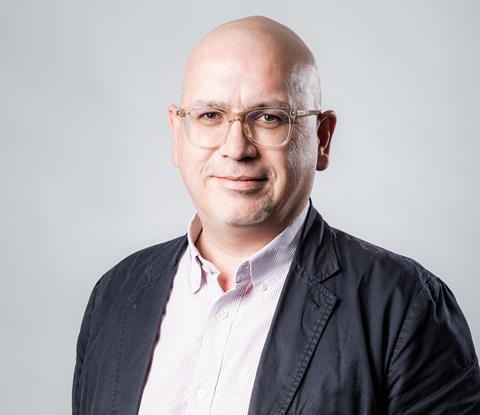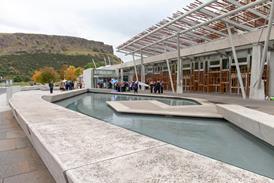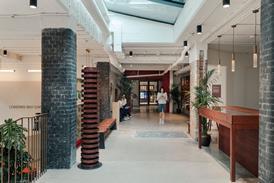Mark Middleton considers architectural legacy

The news of the death of Charles Jencks this month has sparked many reflections and stories about his influence on the world of architecture. I do not consider myself an expert in synaptic connections, so I have no idea why, but this sad news took my mind on a different journey. It jumped from Jencks to a BBC documentary from the 80s, via my old university in Dundee and a Peter Greenaway film and ended with a rumination on architects, architectural critics and their legacies. A strange journey and one I will recall here as my own journey with Charles Jencks.
From what I have read in the many articles published since his death he was an erudite and intelligent man. I never had the chance to hear him lecture or had the honour of meeting him but, despite this, I felt I knew him through his work.
As we know, he was the man who codified architectural post-modernism, becoming a spokesman for a generation of architects (despite many of them being “post-modern” before his book was written!). The Language of Post-Modern Architecture, first published in 1977, created a polemic that established a set of values to which all post-modern architecture should subscribe. It kick-started a “crisis” in our profession which placed architects on one of two sides.
When my own architectural education started in 1986, the power of post-modernism was beginning to wane, but to me the polarisation of opinion still appeared to rage. BBC2’s Architecture at the Crossroads was the first serious documentary about architecture I had seen and it concluded its eight-episode run as I started my degree, foregrounding my first few years of architectural education. Having re-watched it recently, it’s a startlingly one-sided treatise – a political broadcast for the post-modernist party.
While I knew little about architecture at that time, I had a very intuitive response. I could not relate to the buildings Jencks espoused. I loathed them and regarded him as a politician that I was ideologically opposed to. Looking back, my arrogant certainty of what was good or bad was probably a luxury of youth but, still, I paid no further attention to Jencks or post-modernism (aside from the occasional sneer), paying homage to different gods instead.
My blissful indifference to Charles Jencks and his work carried on for many years, until the incredible achievements of the Maggie’s Centres came to the public’s attention. I began to see year after year the amazing catalogue of buildings he curated in memory of his wife. The collective power of these buildings is a physical essay on how architecture can have a positive effect on people’s lives, even in the most severe of circumstances. My mother passed away from cancer but didn’t have the chance to use a Maggie’s Centre. After visiting a few, I wish she had. Curating such a high-quality collection of buildings, all of which have the same noble purpose, is perhaps several lives’ worth of achievement. Not that he would have cared, but I changed my opinion and now mourn his loss.
>> Also read: Charles Jencks dies aged 80
>> Also read: Foster pays personal tribute to Jencks
The death of an important figure such as Charles Jencks, someone with two if not more careers, does force us to think about how our profession remembers. Every time I think of architectural legacy, I am reminded of the fictional architect Stourley Kracklite, Brian Dennehey’s character in Peter Greenaway’s 1987 film The Belly of an Architect. He is an American architect in Rome curating an exhibition on Étienne-Louis Boullée, an 18th-century architect famous for designing architectural follies, and for not building anything. Kracklite is a combative character who when asked if he is a modern architect replies, “No more modern than I should be”. He is determined to realise his hero’s work in the face of escalating costs, his own personal problems and failing health. To me, this illustrates that while we can be remembered in many ways, ideas lose their power, written texts can go unread and memories will fade, but built work is the most long-lasting form of legacy.
Architecture is as broad as you can make it. A universality of approach is limiting. Modernism can’t and hasn’t solved everything. We should try to create as diverse an output as we can, to solve as many problems as possible, in any way that works – in that regard I agree with Charles Jencks.
Pericles said: “What you leave behind is not what is engraved in stone monuments but what is woven in the lives of others”. In the case of Charles Jencks it is perhaps both. His greatest gift was not his polemic, but it was his buildings and the positive effects they have had on people’s lives.















2 Readers' comments